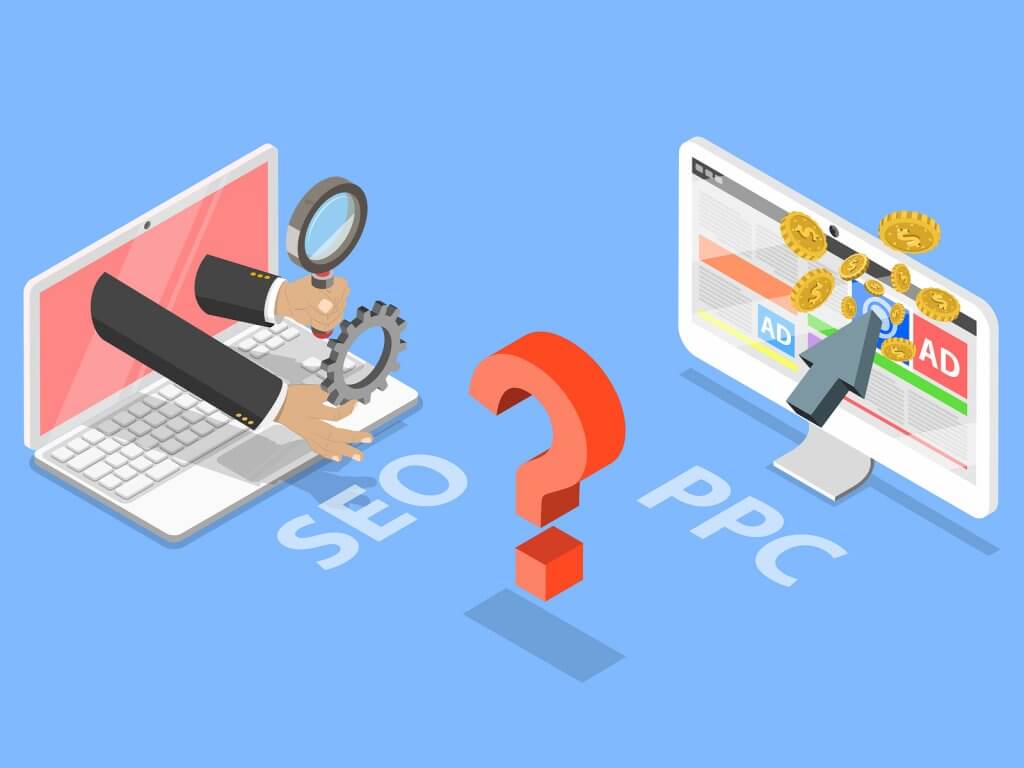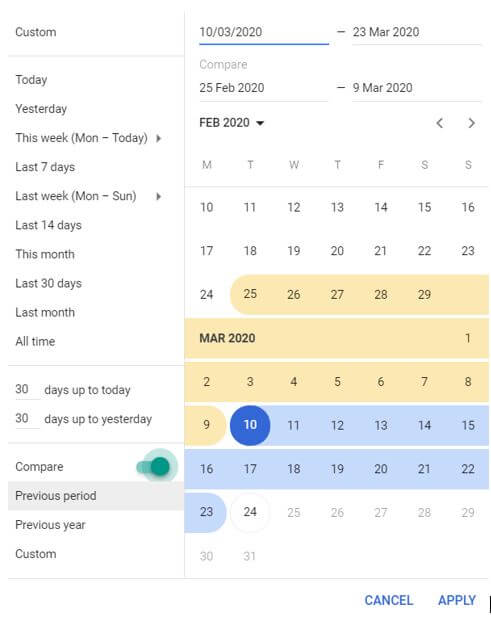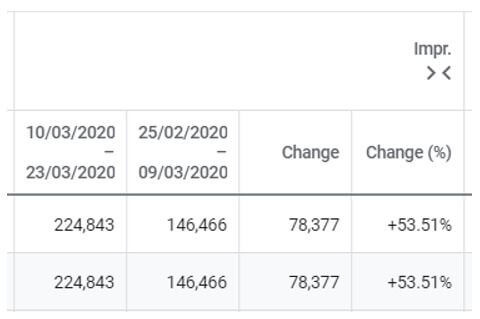6 ways to use PPC data to improve your SEO
PPC advertising can be highly profitable on its own. Still, some advertisers often forget the other major benefit of PPC advertising – you gain a whole wealth of data on your website and how people are searching. This is especially true if your business is running Paid search advertising, or Google Shopping campaigns. PPC experts use this data to improve their PPC advertising campaigns, but there is more that you can do with this data. It does not have to stay within the PPC team. SEO experts can use this data to improve their SEO advertising or as an extra data source to better inform their SEO strategy.

If you are an SEO expert and your business utilise PPC advertising, then here are six ways that you could work with PPC consultants to help you further improve your SEO advertising.
1. Identify questions to answer
If you’re running a Paid Search campaign or a Shopping campaign, PPC has a wealth of data on long-tail searches that your customers are searching for. If your PPC consultant is bidding on non-exact match keywords, then it is likely that their ad has shown on searches that include a question.
You may be able to use this data to identify what questions your customers are searching for. You can then look at answering these questions within the relevant areas of your site.
What to ask for
Ask for a search query report looking back a few months containing the search term, impressions, clicks, conversions and conversion rate data.
How to use the data
You will get a spreadsheet that has raw data on the searches that have triggered a PPC ad. You will need to sift through this data to find questions that your customers are asking. As a starting point, try filtering for search terms that contain words like ‘are’, ‘can’, ‘why’ ‘how’ where’ ‘what’, ‘when’ to find searching containing a question.
2. Identify new pages to create
Even though there are other ways to do this, you can use PPC data to get an idea on searches that have a lot of volume that you don’t already have a specific page for. There may be certain searches that would benefit from having their own, more targeted page.
What to ask for
Ask for a search query report looking back a few months containing the search term, impressions, clicks, conversions and conversion rate data.
How to use the data
You should get a spreadsheet containing search term traffic data. Look through the data and identify high volume searches that you do not quite have a targeted page for. Also, look for high search volume searches with a poor conversion rate. Look at the landing page and think about why the conversion rate for the search term is poor. It may be that the landing page does not contain the answer to the question that these people are searching for. This may be a good time to answer that question on the page or create a new page for those searches.
3. Identify high conversion rate keywords to go after
Getting traffic data is useful when deciding on your priority keywords to track and optimise towards. However, PPC data can give you actual conversion rates by keyword. You can use this data to work out what keywords are likely to make you the most money and not just increase your traffic.
What to ask for
Ask for keyword data for the last two months containing the keyword, impressions, impression share, clicks, conversions and conversion rate data
In a lot of cases with PPC advertising, your ad won’t show all the time because your bid is not high enough. Your impression share shows the percentage of times that your ad appeared on the search engine results pages compared to how many times it could have appeared. So, for example, if you have ten impressions and a 50% impression share, then 20 people searched for your keyword, and your PPC ad appeared ten times. Seeing as though we only want to consider keywords that have a decent amount of volume, we will need the impression share data to calculate the actual search volume of a keyword and not the number of times our PPC ad appeared for a keyword.
You can use the impression share and impressions data to calculate how many people searched for a keyword by using the below formula:
Actual searches = Impressions / Impression share
If you don’t get the conversion rate data, then you can calculate it with the below formula:
Conversion Rate = Conversions / Clicks
How to use the data
Add an extra column that calculates the total searches using the impression share data. If you don’t have the conversion rate data, then add an extra column to calculate the conversion rate. You can then filter for the highest searches that contain a good conversion rate. Remove all keywords that have a high amount of volume and either no conversions or an unacceptably low conversion rate. You can now get an idea on the kind of themes that have a very good conversion rate and are likely to result in a lot of profit for your business.
4. Get an idea on keyword volume
SEO people have several tools that they can use to try to estimate keyword volumes. If you’re currently running PPC advertising, then you have actual keyword volume data right in your Google Ads account. This means you don’t even need to try to estimate the volume because you have actual historical data.
When requesting keyword volume data, you must ask what locations are being targeted. This is because your PPC expert may only be targeting certain locations, or they may have blocked out certain locations due to poor performance. If you want to get an idea of total traffic volume for a specific keyword, then you will need to bear this in mind.
You will also need to ask if they have blocked out any other dimensions such as age groups, gender, audience or device. Similarly, you will need the impression share data to be able to get the actual amount of volume and not the amount of volume that the PPC keyword was able to get due to its Ad Rank not being high enough.
What to ask for
Ask for keyword data for the last two months containing the keyword and impressions, impression share, clicks, conversions and conversion rate data.
How to use the data
The process that you use to identify high volume keywords to consider targeting is the same as finding high conversion rate keywords. Add in an extra column that uses the impression share data to calculate the total searches for a keyword. Once you have this data, you can add in a filter to show the highest impression keywords first. If you’re looking to increase traffic, then perhaps some of these keywords are the ones that you should be focusing on.
5. Use ad copy testing data to improve organic CTR
PPC experts are always testing to get more out of their advertising budget. It is common for PPC people to carry out PPC ad copy testing to learn which messaging works best for each keyword, or group of keywords. One of the primary metrics that PPC people will look at when carrying out ad copy testing is the clickthrough rate (CTR). This is because improving your CTR not only increases the amount of traffic that you’re getting; it also improves the Quality Score of the keyword which brings down you click prices. This means that the PPC expert can buy more clicks for their budget. In addition to looking at the CTR of ad copy messaging, they also look at conversion rate among other metrics.
For the SEO expert, this means that there is a lot of ad copy messaging data that you can use to help you decide on what message to put in your Meta description tags and Title tags to improve the CTR of your organic listings.
There are many other ways to increase the clickthrough rate of your organic listings. Take a look at our blog on using Schema to increase your clickthrough rate.
What to ask for
Ask for all ads that are currently being used and have been in the last year, for sending traffic to the page you want to look at. For each ad, ask for the impressions, clicks, CTR, conversions, conversion rate and landing page.
How to use the data
For each landing page, look at the clickthrough rate and conversion rate of each message that has been tested. It is important to look at the conversion rate as well as clickthrough when deciding on which messaging performs the best. This is because it is possible for a message to have a high clickthrough rate but a low conversion rate, perhaps because it is giving the wrong impression about your business. Once you have identified the best performing messaging, you can test the impact of using this message or something similar to it in your organic listings.
If you don’t get the clickthrough rate data, then you can calculate it using the below formula:
Clickthrough rate = Clicks / Impressions
6. Use PPC data as an additional data point to diagnose fluctuations in traffic
SEO people often need to diagnose why traffic has increased or decreased. There are many reasons why traffic may fluctuate, and this is a broad topic. However, if you suspect that the change could be due to seasonality, then you can further test your theory by seeing if PPC has also seen the same fluctuation in traffic.
What to ask for
To do this, you could look in look in the Source/Medium report under Acquisition within Google Analytics and then look for fluctuation in Google / CPC traffic. However, you wouldn’t know if any change is down to a change in seasonality or a change in PPC spending. This is because the PPC expert may have reduced or increased PPC spending during that time.
A better option would be to either ask the PPC expert if PPC spending has changed and then align this up with any changes in PPC traffic. The second option is to look at the Google Ads account yourself if you have access to it.
How to use the data
If you have access to the Google Ads account, then you can start to diagnose. If PPC has seen a fluctuation in traffic, conversions, conversion rate or anything else that you want to look at by using the compare feature within Google Ads.
To do this, on the top right of Google Ads, select the date range where the fluctuation occurred and click on the compare button. Make sure you select Previous Period and click on Apply.

You will then be able to compare the data during the selected period with the same number of days before that period. Look at Impressions, average CPC, CTR, conversions and conversions rate to get an idea on what has happened within the account.

Wrapping up
Digital marketing teams work the best when they work together, sharing data and insights. This allows for a comprehensive, all-encompassing strategy to be created that ultimately benefits the business. PPC experts have a lot of data that SEO people can use. If you’re an SEO expert, then get talking to your PPC expert and see if there are any opportunities to collaborate and work together.